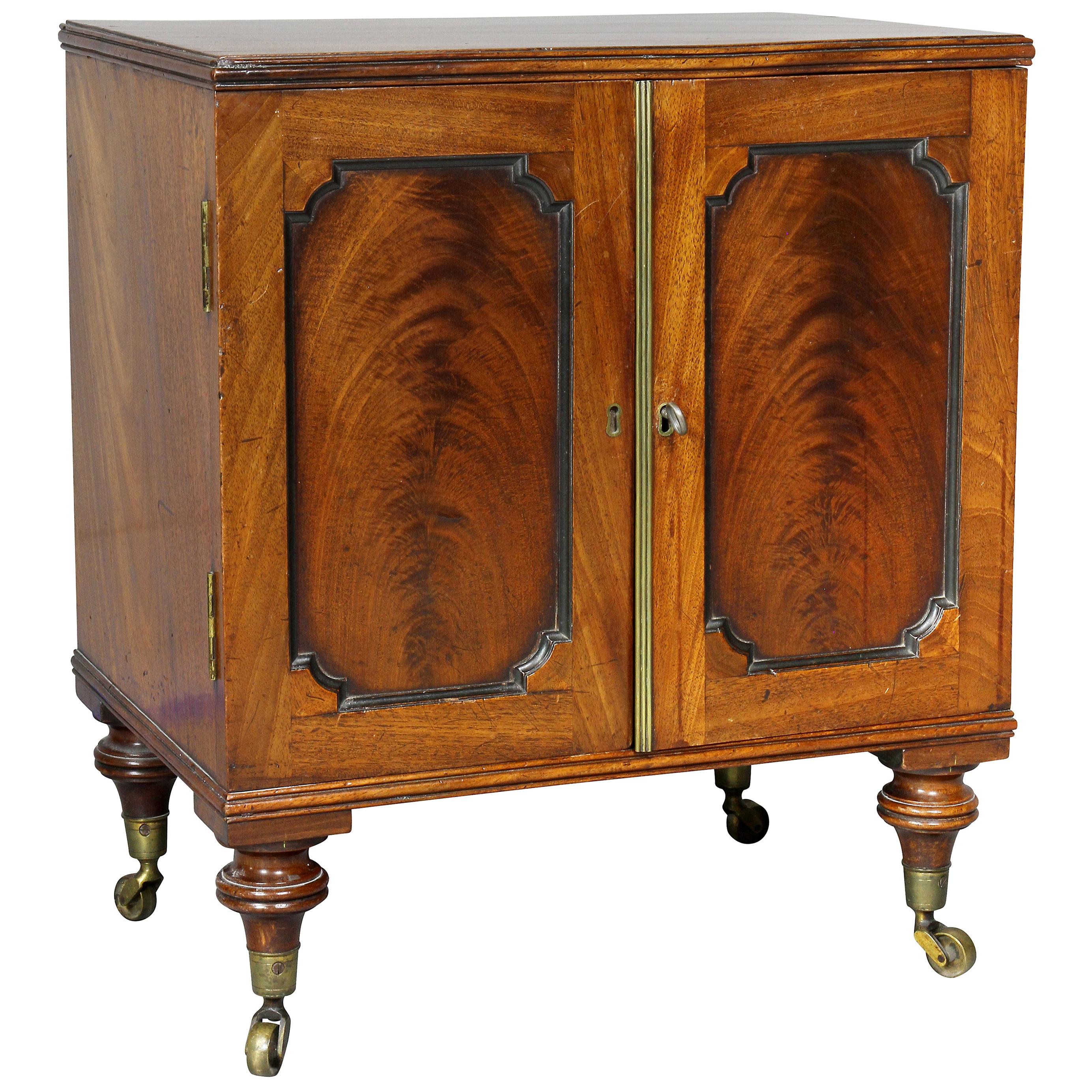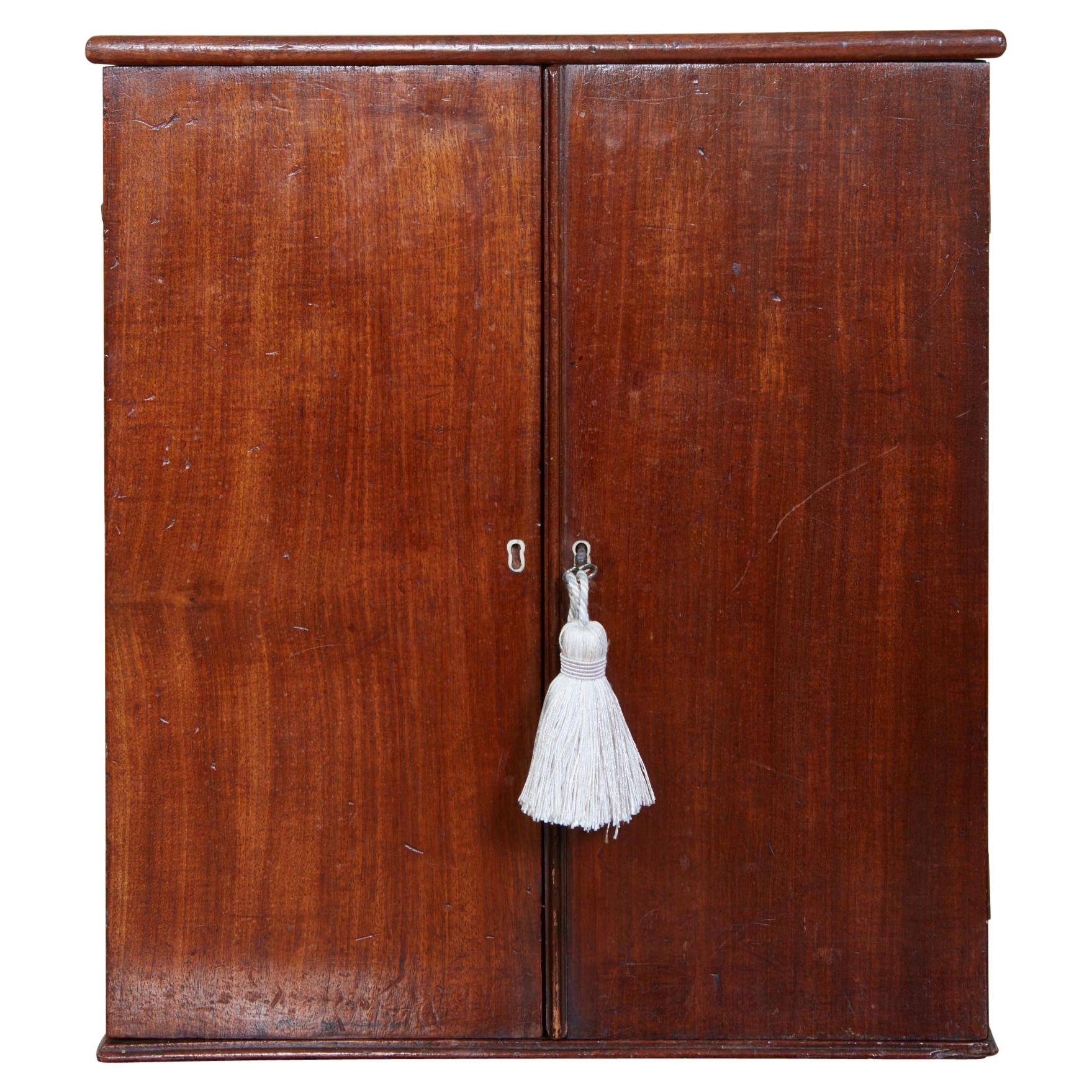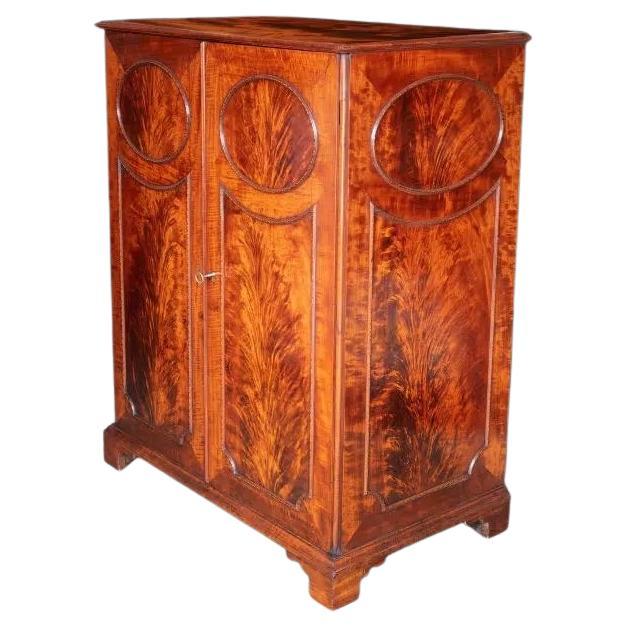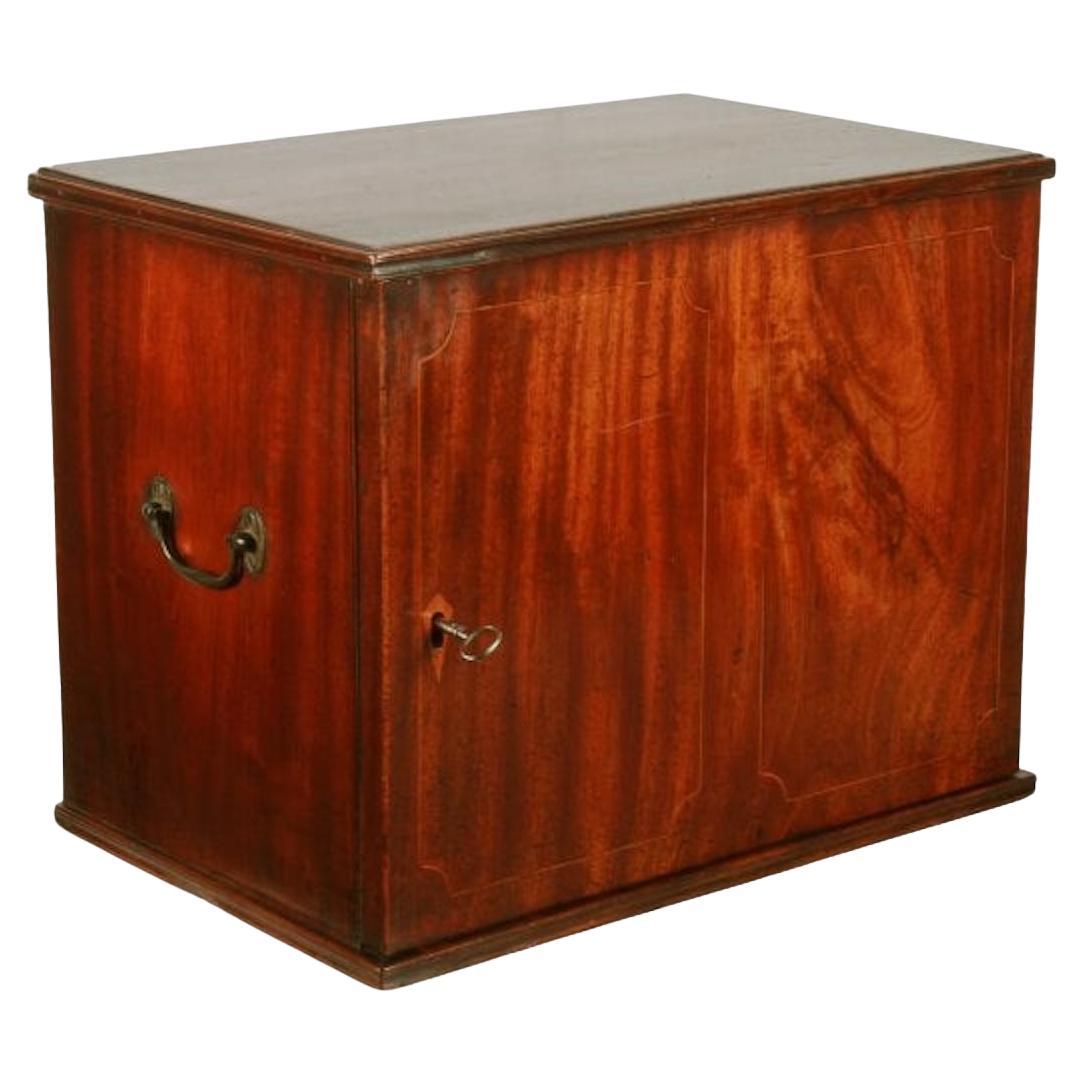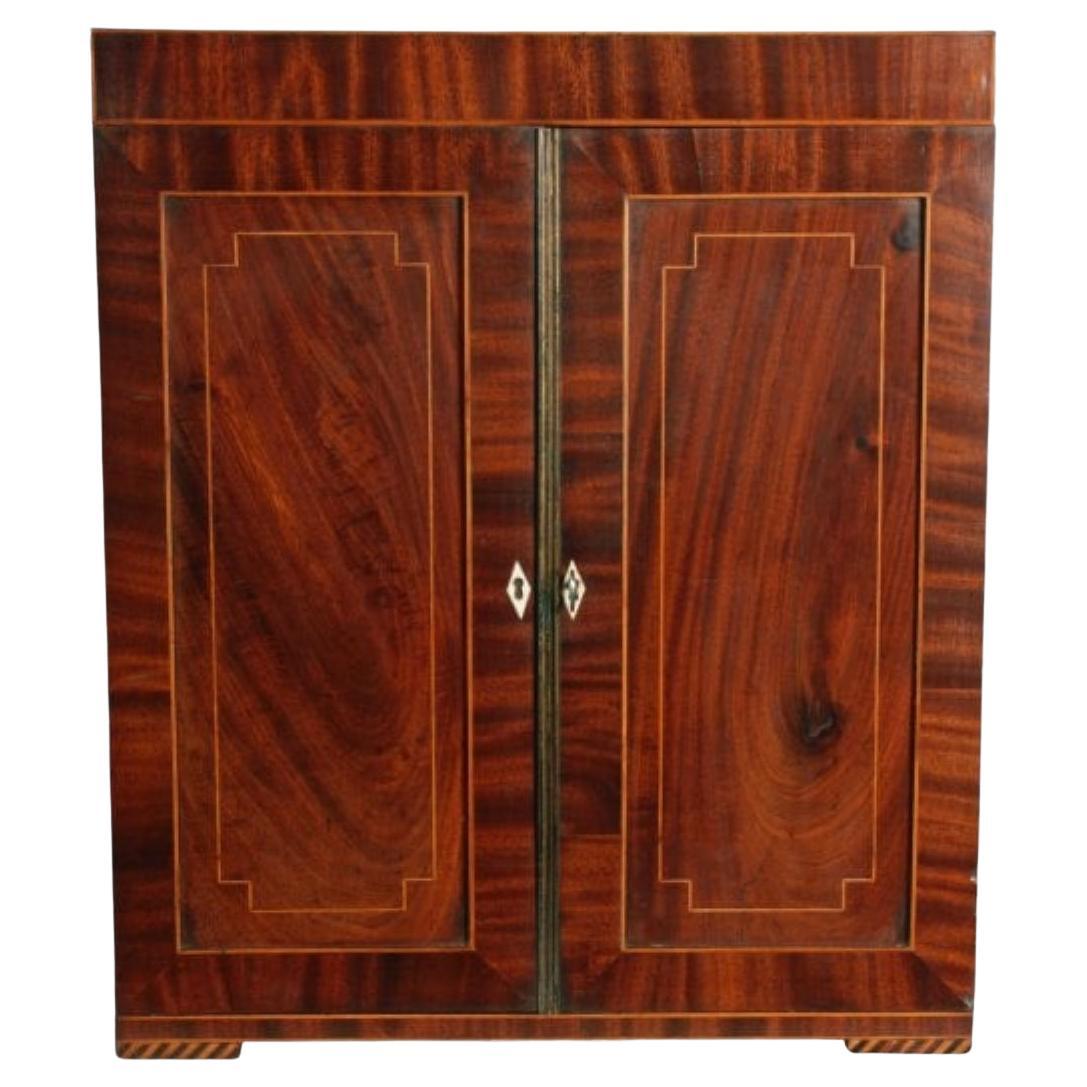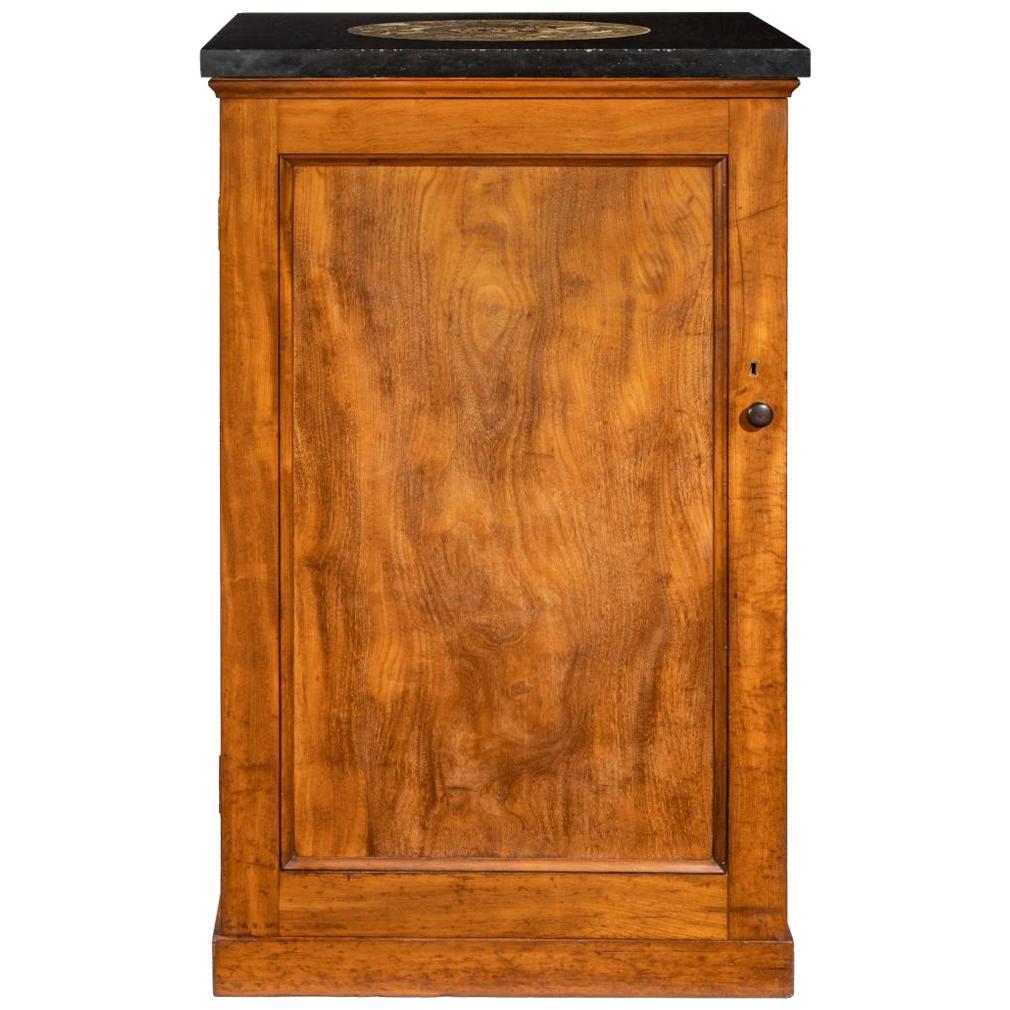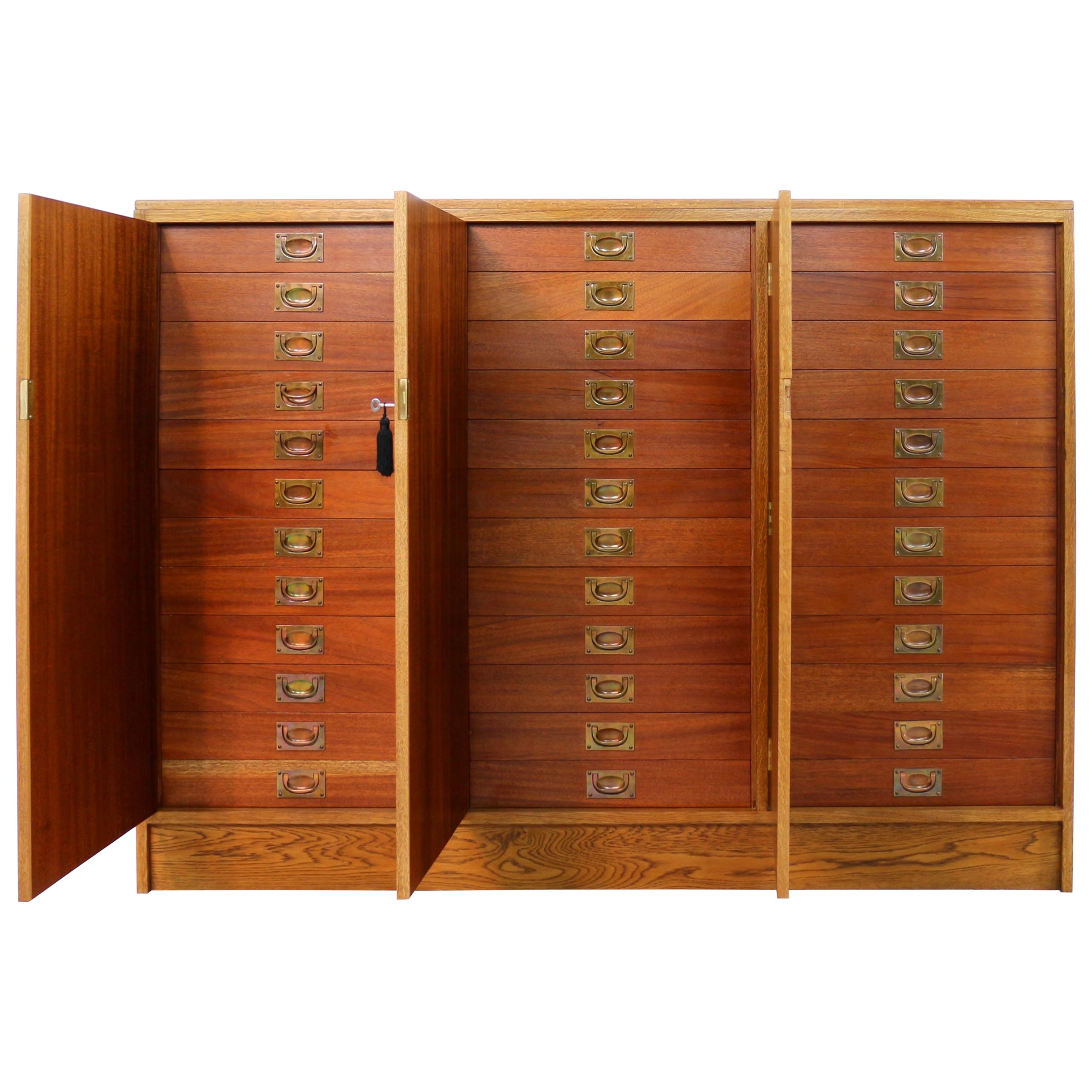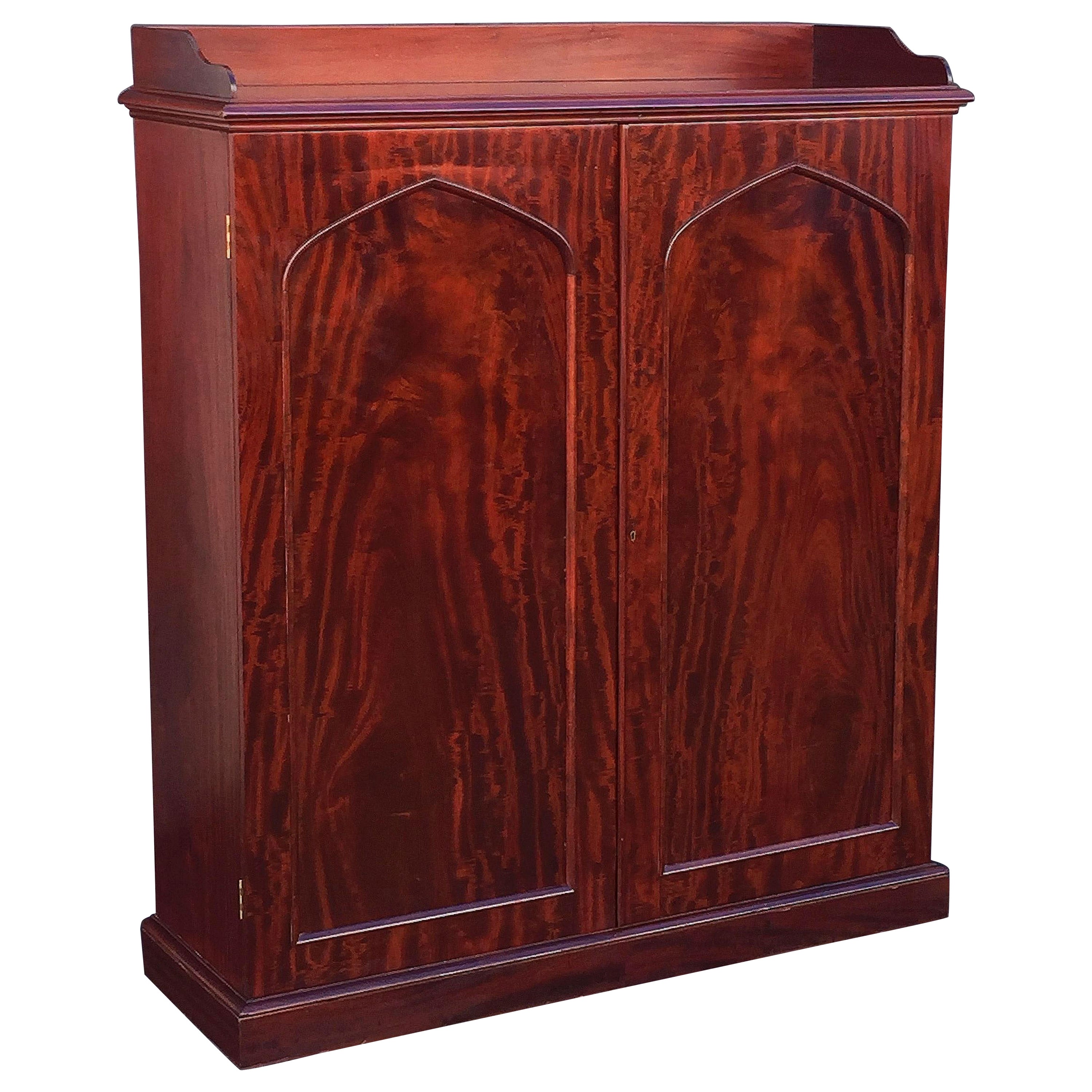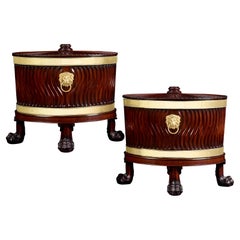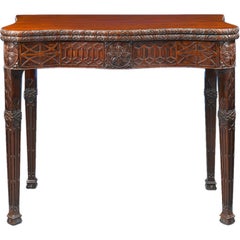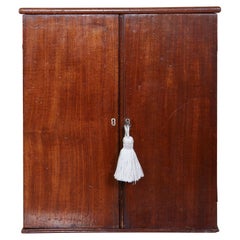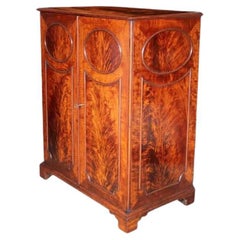
George III Mahogany Gun Collector's Chest
View Similar Items
Want more images or videos?
Request additional images or videos from the seller
1 of 5
George III Mahogany Gun Collector's Chest
About the Item
- Dimensions:Height: 74 in (187.96 cm)Width: 52 in (132.08 cm)Depth: 25 in (63.5 cm)
- Style:Georgian (Of the Period)
- Materials and Techniques:
- Place of Origin:
- Period:
- Date of Manufacture:Circa 1780
- Condition:
- Seller Location:New Orleans, LA
- Reference Number:Seller: 29-96541stDibs: LU89111014796
About the Seller
5.0
Recognized Seller
These prestigious sellers are industry leaders and represent the highest echelon for item quality and design.
Established in 1912
1stDibs seller since 2010
93 sales on 1stDibs
Typical response time: 7 hours
More From This SellerView All
- George III Mahogany And Satinwood SideboardLocated in New Orleans, LAThis magnificent demi-lune Georgian sideboard displays the pinnacle of the era’s refined craftsmanship and boasts a distinguished provenance. Crafted of the finest mahogany, the era's timber of choice for well-appointed manor homes, the sideboard is inlaid with satinwood marquetry and crossbanded with tulipwood, one of the most coveted species of rosewood. Tulipwood is prized not only for its durability but also for its innate beauty. The sideboard features its original brass pull handles and knobs. Illustrating the caliber of its exquisite craftsmanship, this large demi-lune sideboard was once housed in one of the most illustrious grand manor homes of the era, Hackwood Park...Category
Antique 18th Century English Georgian Sideboards
MaterialsBrass
- George III Mahogany Wine Cooler PairLocated in New Orleans, LAThis rare and important pair of George III mahogany wine coolers epitomizes the graceful Neoclassical aesthetic championed in the Georgian style. Crafted of the finest quality mahoga...Category
Antique 19th Century English Georgian Wine Coolers
MaterialsZinc, Ormolu
$64,500 / set - George III Mahogany Concertina Card TableLocated in New Orleans, LAThis phenomenal Georgian concertina card table is a masterpiece of English woodworking. Constructed for multifunctional use, this mahogany table ...Category
Antique 18th Century Irish George III Card Tables and Tea Tables
MaterialsMahogany
- King George I Ambassadorial Secrétaire-CabinetLocated in New Orleans, LAThis highly important secrétaire-cabinet was crafted for and specially ordered by King George I for the British Ambassador to Russia. From its craftsmanship and materials to its exceptional artistry, it is a work of royal and historic significance that exudes power in each and every detail. The broken pediment at its apex features the simplified royal coat of arms bearing the king’s crown, while the interior is adorned by portraits of the British Royal Family. Placed within the ambassador’s St. Petersburg home, this entirely unique piece of furniture would have been a potent reminder of England's grandeur and political importance. Relations between England and Russia during this period were at an all-time high. Peter the Great had traveled to England in 1698 as part of his widely known “Grand Embassy” tour, wherein he attempted to gain foreign support against the Ottoman Empire. He spent a period of nearly four months there, meeting with King William III and his court on numerous occasions. Noted academic Arthur MacGregor wrote concerning the impact of the trip, “For two decades following Peter's visit, British influence in Russia reached a peak. It manifested itself in social custom, in craft practice and in ships and naval organization... it reached a significant sector of the population before relations cooled once again and the two nations pulled back from this era of unprecedented cordiality.” First and foremost, however, it is a reminder of British might and influence. By the reign of King George I, England had come into its own as a world power. Unique in its design, this cabinet is a reflection of the country’s might. It is crafted from the highest-quality solid walnut and burr walnut adorned by gilded lock plates and engraved hinges. The presence of ormolu at its apex and lining the doors was a rarity for this period, and its addition makes manifest the importance of the design. The outer doors open to reveal multiple interiors, including fifteen separate drawers around a central cupboard; the cupboard doors each bear mezzotint portraits of George I and his father, Ernest Augustus, Elector of Hanover. An etching after the portrait of George I dating to circa 1716 is in London’s Royal Academy. A second, inner pair of doors are adorned by mezzotints of the Prince and Princess of Wales (later Queen Caroline and George II), which are both after portraits by Sir Godfrey Kneller dated 1716 in the Royal Collection. A final portrait is revealed on the very interior of the cabinet, where a mezzotint of Frederick, Anne, Amelia and Caroline, children of the Prince of Wales, resides. An etching (circa 1715-1720) after this portrait can be found in the National Portrait Gallery (London). Apart from its abundance of royal portraiture, the cabinet features stunning painted decoration, including floral designs as well as clouds, birds and trees in a bucolic motif reminiscent of Eden. Its lower portion is a study in both form and function, featuring a fitted secrétaire-drawer above three additional drawers for storage. The cabinet appears in The Shorter Dictionary of English Furniture by R. Edwards from 1964, a text that is regarded as the bible of British furniture design. Edwards describes it as a “writing cabinet...given by George I to the British Ambassador at the Russian court.” The cabinet was likely made for the 18th-century German diplomat and writer Friedrich Christian Weber, who represented English interests at the Russian court from 1714 until 1719. Although Weber’s tenure as ambassador was relatively short, while in St. Petersburg, he authored his account entitled Das veraenderte Russland (The Present State of Russia), which was published in three volumes in 1721, 1739 and 1740. It may, however, also have been made for George Douglas, 2nd Earl of Dumbarton, who served as ambassador alongside Weber in 1716. Diplomatic relations ceased between the two countries in 1721. In 1928, the cabinet appeared for sale at the International Exhibition of Antiques & Works of Art in Olympia. It had previously been in the collection of the Woltner family of Bordeaux, the celebrated vintners who owned the estate Château Laville Haut-Brion and produced wine of the same name. According to the family, Monsieur Woltner was given the cabinet as a gift from an aunt who lived in Russia for many years. After leaving the Woltner collection, the cabinet was acquired by William Berry...Category
Antique 18th Century English Georgian Secretaires
MaterialsBrass
- 18th Century George III Mahogany Footed Knife BoxesLocated in New Orleans, LAAn exceedingly rare and important pair of George III-period mahogany knife boxes of exceptional quality and condition. The boxes are of serpentine form with refined crossbanded and c...Category
Antique 18th Century English George III Knife Boxes
MaterialsSerpentine
$18,500 / set - Mahogany Upright Cane CabinetLocated in New Orleans, LAClassical style and impeccable design distinguish this English upright cane cabinet. Crafted of lustrous Cuban mahogany, this case is comprised of a beautifully paneled door which op...Category
Antique 19th Century English Cabinets
MaterialsBrass
You May Also Like
- George III Mahogany Collectors CabinetLocated in Essex, MARectangular top over a pair of paneled doors enclosing adjustable shelves, raised on turned feet and original casters. Provenance; Norman Adams Ltd. Londo...Category
Antique 1790s English George III Cabinets
MaterialsMahogany
- English Mahogany Collector's Cabinet / Drinks TableLocated in Greenwich, CTUnusual mid 19th century English mahogany collector's cabinet having two doors, the interior with turned bone handled pull out and adjustable shelves, the interior of the cabinet bea...Category
Antique 19th Century Georgian Cabinets
MaterialsMahogany
- George III Collector's Cabinet in the Manner of John LinnellLocated in Reepham, GBA handsome flame mahogany collector’s cabinet, circa 1800, the moulded rectangular top above a pair of oval and shaped panelled cupboard doors, the inset veneers being within raised ...Category
Antique Early 19th Century Cabinets
MaterialsMahogany
- Anne’s Altar / Collector’s Chest of DrawersBy Jiri KrejcirikLocated in Prague 3, VinohradySculptural altar. Wunderkabinet. A furniture solitaire encapsulating the childhood memory of my mother’s dresser, which used to be a storage for personal artifacts, jewelry, and trav...Category
21st Century and Contemporary Czech Post-Modern Cabinets
MaterialsGold Plate, Brass
- Annes Altar – Collector's Chest of Drawers CabinetBy Jiri KrejcirikLocated in Prague 3, VinohradyThe sculptural cabinet altar that encapsulates the childhood memory of my mother’s dresser. It consisted of a jumble of drawers, compartments and shelves. It was a storage for personal artifacts, jewellery as well as travel keepsakes. This memory inspired me to design a furniture memento. Its heart lies in the drawer unit, consisting of fifteen red drawers...Category
21st Century and Contemporary Czech Post-Modern Cabinets
MaterialsBrass, Gold Plate
- Georgian Mahogany Collector's Cabinet, 18th CenturyLocated in Southall, GBGeorgian Mahogany collector's cabinet An 18th century Georgian mahogany three drawer collector's cabinet. The cabinet has a single box wood inlaid door with a working lock and ...Category
Antique 18th Century English Cabinets
MaterialsMahogany
Recently Viewed
View AllMore Ways To Browse
Mahogany Gun
18th Century Gun
Gun Cabinets
Gun Cabinet
Gun Storage
Specimen Collectors Cabinet
Specimen Chest
Antique Gun Cabinet
Georgian Button Back
Specimen Cabinet 18th Century
Gun Racks
Gun Rack
Mahogany Gun Case
Weapon Cabinet
Weapons Rack
Bar Or Drinks Cabinet
Bars Or Liquor Cabinets
Metz Walnut Night Stand Or Cabinet
